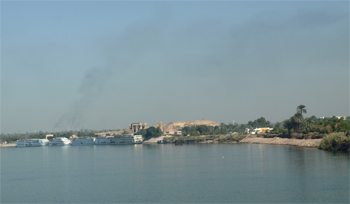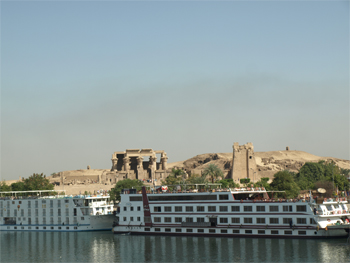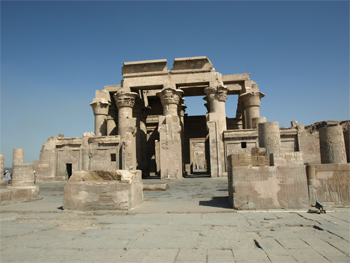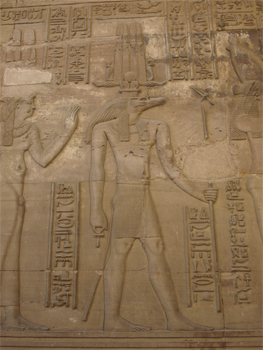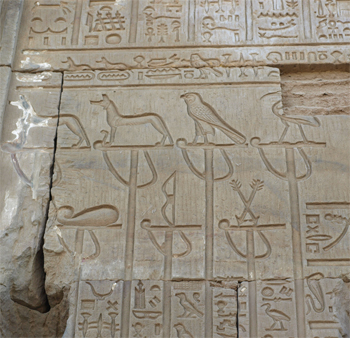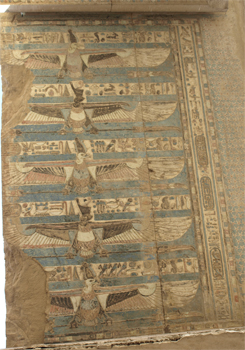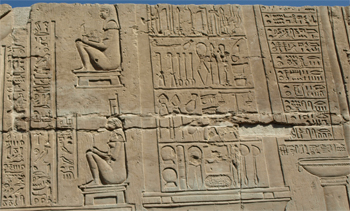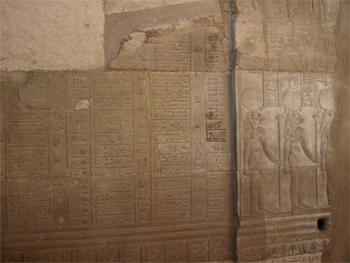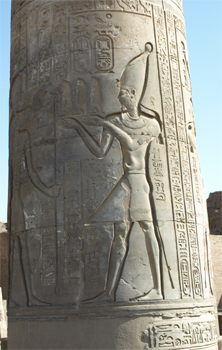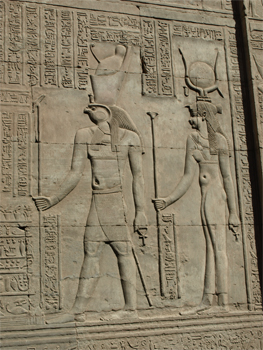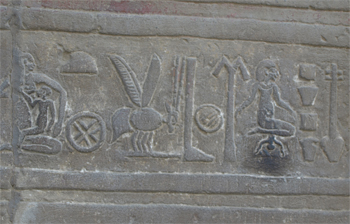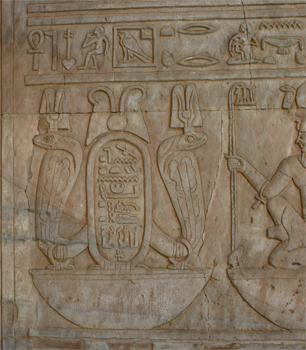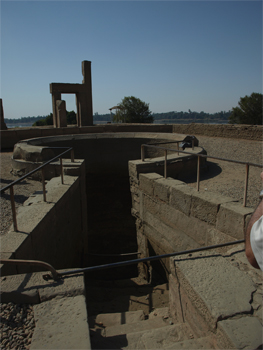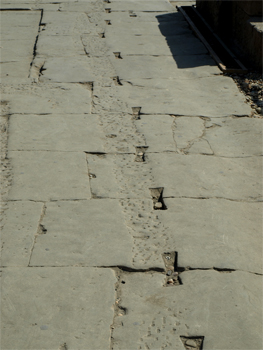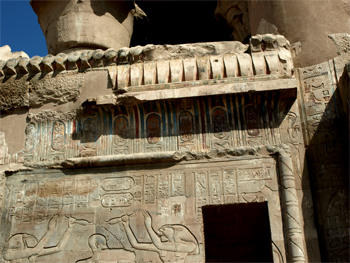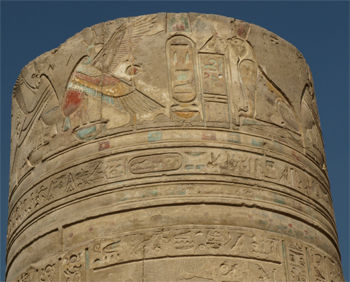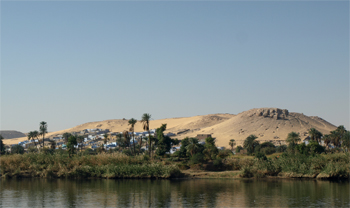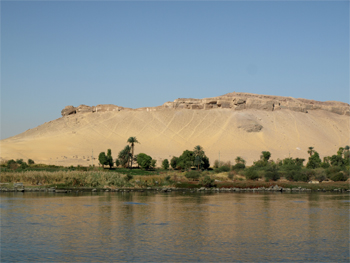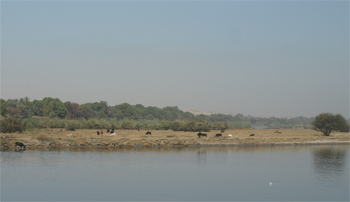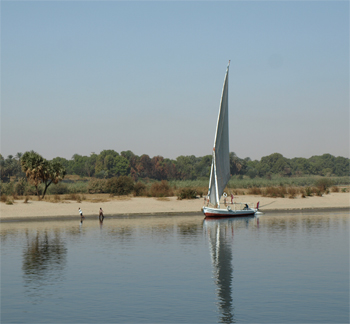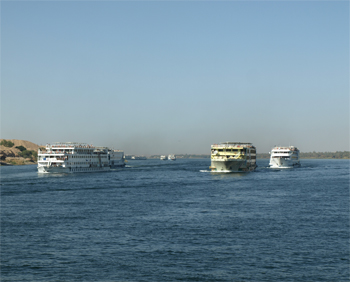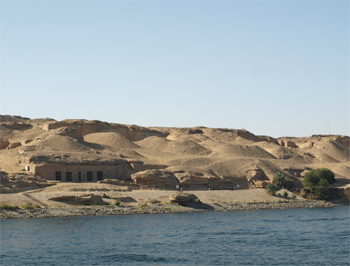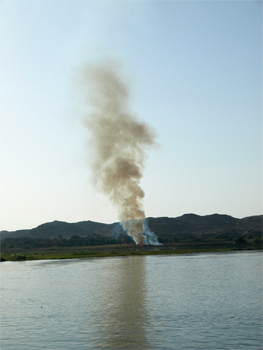At 9 AM we started our boat ride on the Nile and set sail for Kom Ombo.
We docked at the temple grounds and walked the site with Mohamed for about an hour. The temple was started by Ptolemy 6 and in 119 BC. It is dedicated to the crocodile-headed god, Sobek, and to Horus.
|
Approaching Kom Ombo
|
Kom Ombo from the river
|
Temple of Kom Ombo |
Kom Ombo is perhaps the most damaged of the sites we are visiting and is unusual for its 15 columns in 3 rows of 5. The entry facade depicts "stability and life" hoping that that will describe Egypt during Ptolemy VI's reign.
|
Sobek - the crocodile God
|
Beautiful hieroglyphs |
Ceiling - vultures against a blue background representing the sky
|
Birthing chair and surgical instruments
|
Horus was a god of physicians and one wall shows surgical instruments and a birthing chair that were used in 200 AD, obviously added during a later Roman period.
|
|
Another wall contained an Egyptian calendar indicating what offerings should be given on what days. A vertical line indicates units and a hairpin indicates tens. The Egyptian calendar had 12 months of 3 weeks of 10 days and an extra 5 days at the end of the year - one day for each god: Isis, Osiris, Horus, Seth, and Nephthys. Leap year was figured into the calendar much later. Imhotep is credited with devising the calendar.
|
A Pharaoh |
Horus and Hathor
|
The images on these walls show a difference over the art of older temples. The figures have belly buttons, breasts and nipples, and obvious butts. One wall shows Cleopatra I, Ptolemy V, Horus the scribe with the stick on the frog, Horus the god, and Sobec the crocodile god of life. The hieroglyphs at Kom Ombo are a little different. There is a woman giving birth, and a bee. Mohamed finally told us the significance of the Egyptian fly. The fly is a pest who keeps attacking and badgering his enemy. So the fly means a good soldier and was given like a medal to good, aggressive soldiers.
|
|
|
|
Kom Ombo also had a cistern to hold and provide water from the Nile for those at the temple.
|
Many of the stone blocks show a butterfly shaped hole cut into the surface to be filled with brass or wood to hold the blocks together. |
The colors preserved in many of the hieroglyphs are amazing.
|
|
We had the afternoon at leisure as we sailed on to Edfu. Oops - we are not stopping to see Edfu. Supposedly the Minister of the Interior decided it was too dangerous for visitors to be in the area. Since the Uniworld rep is still on board we think he cancelled our evening visit to the "most beautiful and most complete temple" of Edfu. We are sailing on to Luxor instead and may or may not have difficulty getting through the locks since we are jumping ahead of our schedule.
The banks of the Nile are now farms with cows (donkeys and the occasional camel), sugar cane fields with lots of smoke from burning cane, and bananas, and date palms.
|
There is only a narrow strip of greenery along the banks of the river and then sand and rocks.
|
The narrow strip of green and then endless sand.
|
Farms and livestock |
A felucca
|
River boats racing for the lock and Luxor |
Nile river scene |
Burning sugar cane
|
We went to bed not knowing if we would get to see the "crown jewels" of Egyptian antiquities, the Temples at Karnak and Luxor, the Valley of the Kings, and the Temple of Hatshepsut.
